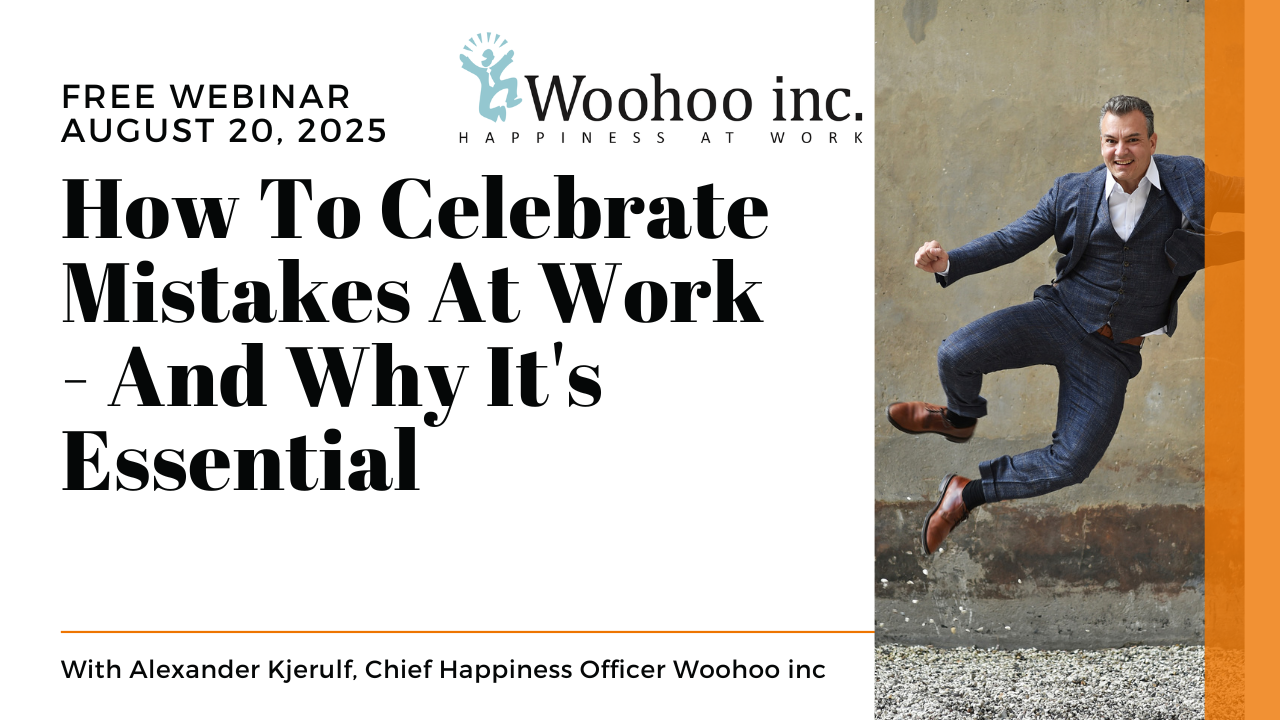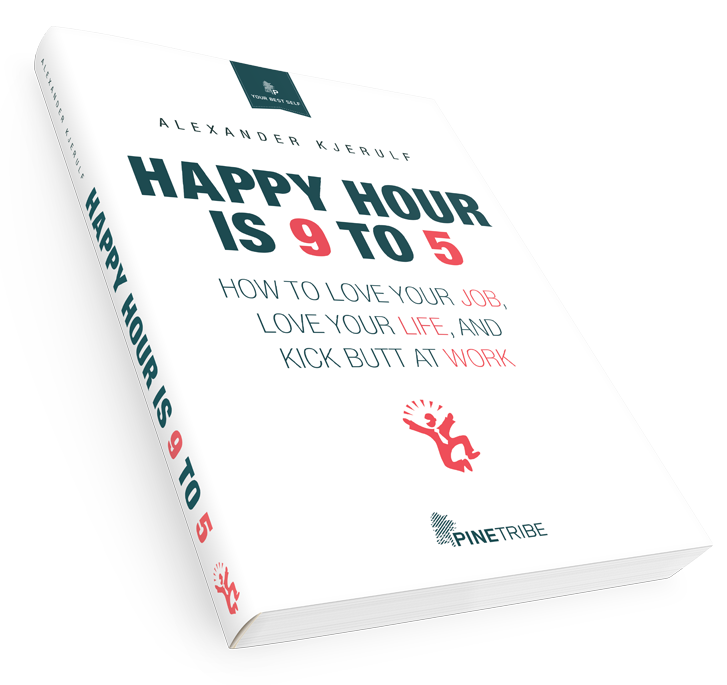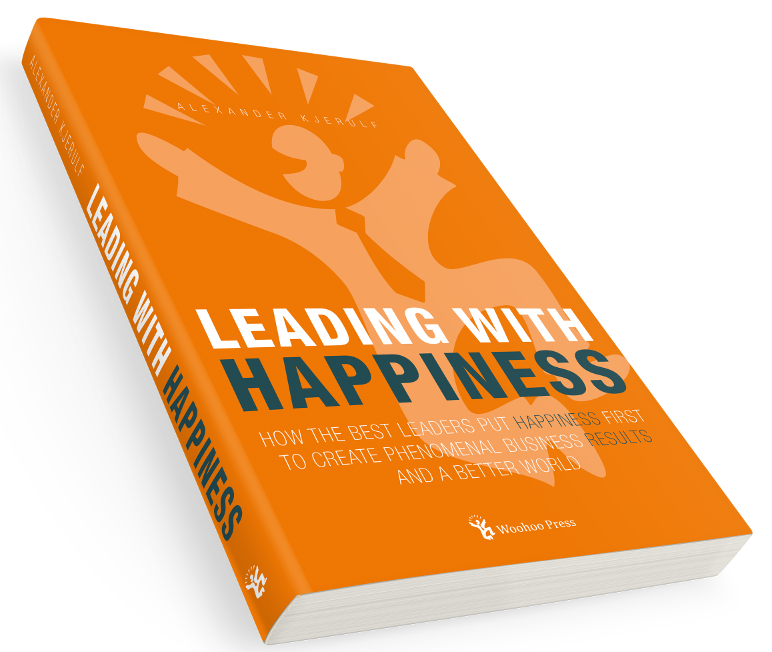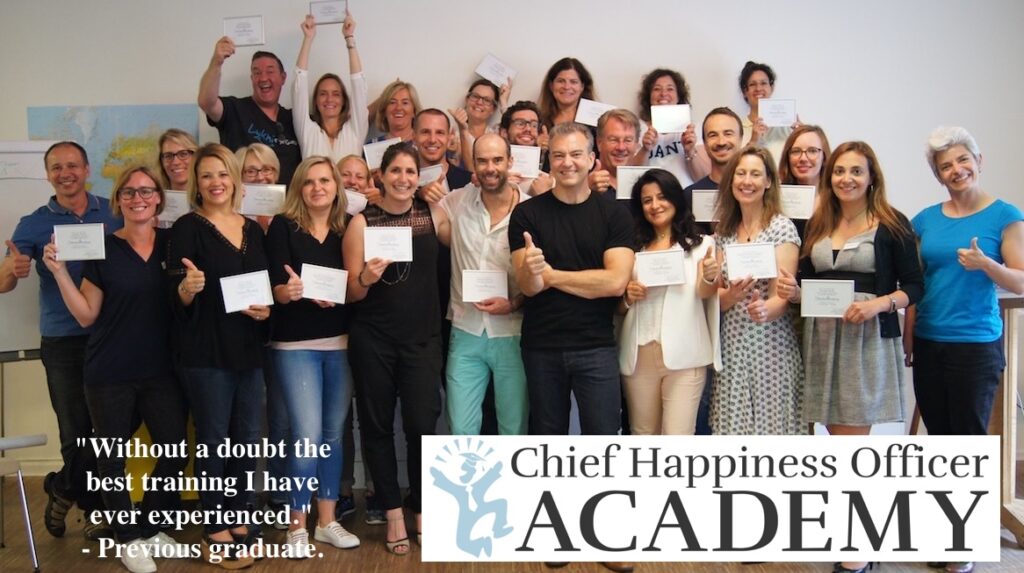I’m speaking in Cape Town on October 23rd at the Scrum User Gathering. You can read all about it and sign up here.
-
Top 10 Things Companies Should Stop Doing Right Now

Companies waste huge amounts of time, money and energy on practices that pretty much everyone hates, not because these practices deliver any value but out of habit and because “everyone else does it.”Here’s my list of the top 10 things companies should stop doing right now.
10: Competitive team building events
Californian home security company Alarm One Inc. had a team building event where winners poked fun at the losers, throwing pies at them, feeding them baby food, making them wear diapers and swatting their buttocks with rival companies’ yard signs.The good news: Alarm One Inc. got swatted in court when an employee sued them and had to cough up USD 1.7 million.
The bad news: A lot of team building events borrow elements from this approach, setting up artificial (and often meaningless) contests pitting coworkers against each other. Let’s stop that kind of thing once and for all.
More: The top 5 reasons why most team building events are a waste of time.
9: Performance reviews
Performance reviews are fundamentally broken. Managers hate them and fear them and resent the drain on their time. Employees often leave reviews demotivated, cynical and with no clear idea of how well they’re doing and how to improve.In the words of Sammy Culbert, professor of management at the UCLA Anderson School of Management in Los Angeles
To my way of thinking, a one-side-accountable, boss-administered review is little more than a dysfunctional pretense. It’s a negative to corporate performance, an obstacle to straight-talk relationships, and a prime cause of low morale at work. Even the mere knowledge that such an event will take place damages daily communications and teamwork.
More: Top 9 Reasons why Performance Reviews Don’t Work.
8: Job titles

When you ask people what they do for a living, most people will give you their job title. As in “I’m an engineer” or “I’m a project manager” or “I’m a developer”.But that’s not what you do – that’s just your title. It really says nothing about you or your job, so I always find myself asking follow-up questions. “So what kind of projects do you manage?”
And make no mistake: A lot of energy is spent in organizations on trying to give people the right titles and fighting over who gets be X and who gets to be senior X. I think we’ll be fine without’em.
More: Death to Job Titles
7: Org charts
Seriously – when was the last time you needed your workplace’s org chart for anything?6: Staff satisfaction surveys
I am thoroughly skeptical about job satisfaction surveys. Here is one reason why:I’ve been with my current company for 9 years, and our “engagement score” just hit an all time high in a year when I have heard more employee concerns about the company than ever before.
Over the last five years, I have personally seen a combination of rewriting survey questions and “teaching to the test” that I believe solely explains the reason for the current score that clearly doesn’t match reality.
For those who might think I’m just cynical, a member of our executive team responsible for the largest part of the company told the HR team to check their math when they showed him this year’s score.
More: Do Staff Satisfaction Surveys do Anything?
5: Job descriptions

Job descriptions are almost always incomplete and/or obsolete. When was the last time you even read yours?Also, if your job can be adequately described in one page, it will soon be outsourced to India.
More: 5 reasons why job descriptions are useless.
4: Corporate values
Having a conversation about your workplace’s identity and mission can be very inspiring. But typical values programs aiming to define and instil corporate values like respect, openness, excellence, team-work etc. rarely work.More: Why corporate values often have no value.
3: Employee handbooks
Employee handbooks are usually long, boring and useless. They gather dust on the shelf or linger unread on the company intranet.Let’s abolish them. Or alternatively, do as computer game company Valve did and let the employees write it. The result is the coolest and most useful employee handbook ever.
More: The Top 10 Most Awesome Things from Valve’s Employee Handbook.
2: Rules and red tape
Alabama A&M University has this policy in case of a death in an employee’s family:Staff members shall, upon request, be granted up to three (3) days annually of bereavement leave for the death of a parent, spouse, child, brother or sister, grand parents [sic], grand parents-in-law, grandchild, son or daughter-in-law, mother-in law, father-in-law, brother-in-law, sister-in-law, step children, children-in-law, aunts, uncles, nieces, nephews, and first and second cousins. Other relationships are excluded unless there is a guardian relationship. Such leave is non-accumulative, and the total amount of bereavement leave will not exceed three days within any fiscal year. If additional days of absences are necessary, employees may request sick or annual leave, after providing an explanation of extenuating circumstances.
(source)Got that? Contrast that with Nordstrom’s rule book:
Rule #1: In all situations, use your good judgement. There are no further rules.
Let people do their jobs – don’t put endless rules, regulations and bureaucracy in their way.
1: Pointless meetings

Meetings are one of the most hated workplace activities. Studies show that the more meetings people attend, the less happy they are at work and that meetings are the biggest time waster keeping people from actually, you know, doing their jobs.I’m not saying we can abolish meetings entirely, but we should abolish all meetings that don’t lead to tangible results. Fortunately, you can fix all problems your workplace has with meetings with one decision: Make all meetings voluntary. You’re welcome.
That’s impossible!!!
Most of the time we advice our clients on what they can do to become better and happier workplaces. But an equally important question to ask is this: “What can we stop doing that is making employees unhappy?”
If you look at the list above and think “That’s impossible! There’s no way we could abolish X,” I want you to ask yourself this: When was the last time, you could only do your job, because you had X?
For instance, when was the last time the org chart was incredibly useful to you? When was the last time you could only complete a project on time because everybody working on it had just the right job title? When was the last time you could only make an important decision by referring to the corporate values?
Your take
Are any of these indispensable to you? Or conversely, did we miss any on the list? Has your workplace abolished some of these already? What was the results?
Related articles
-
Celebrate mistakes
We always tell our clients to celebrate success AND to celebrate mistakes.
And this guy has a lot of mistakes to celebrate:
Have a very happy weekend :o)
Related posts
-
Managers: Have time for your people
Do you have time for your employees? Or do you have more important things to do?
John from Seattle wrote a frustrated comment at my blog some time ago. One of his colleagues at a huge IT project is simply not cutting it: He is always late, he never meets his deadlines and he doesn’t respect agreements. John has raised these issues with his colleague several times without any success, and now he feels that it’s time for his manager to step in.
And John’s manager would very much like to discuss this with him the next time he has a bit of space left in his schedule – which is in three weeks! That’s not good enough because in the meantime John grows more and more frustrated having to do his own job as well as that of his incompetent colleague. John is this close to just quitting – and the company is close to losing a valuable employee just because his manager hasn’t got time to talk to him.
A few years ago The Danish Association of Managers and Executives published a study showing that 60% of Danish managers have too little time for their work because they spend too much time on their employees.
What a load of nonsense! As a manager, your employees are your job. Your very first priority is to keep them happy and productive. Of course all managers have other things to do as well, but if you put your own assignments above those of your immediate subordinates, the result will be an increase in one person’s efficiency (yours) at the expense of that of 10-20 others (depending on how many you are responsible for).
If you’re not 10-20 times more productive than them, that’s a really bad idea.
So you need to have time for your people every single day. Time for two things: creating and maintaining good, friendly relations and handling any crises that may arise.
Some of the world’s top executives have already caught on: Marissa Mayer, in her time at Google opened her office door every afternoon between 4 and 5.30. There was a signup sheet on the wall and couches and WiFi in the hall outside so people could work while they waited. During this hour and a half, all Google employees could present their questions, doubts, wishes or ideas.
A few years ago, IKEA held a European executive meeting in their store in Gentofte, Denmark, and founder Ingvar Kamprad was present too. When the meeting ends, Ingvar takes a stroll through the store, kindly and smilingly greeting each and every employee. He encounters two female employees talking to each other and approaches them with a smile and the words: “And what are too such lovely ladies talking about then?” – following up with giant hug for them both. Not bad for a man who’s a multi-billionaire in charge of well over 100,000 people worldwide – and 86 years old.
Many managers believe that it’s enough to just proclaim that “My door is open”. Well, it’s a good start, but your schedule is also open – or do you have wall-to-wall meetings for many weeks to come? So what exactly can YOU do make time for your employees? I’ve got two simple and effective tips for you:
Tip No. 1: Say good morning!
A kind greeting from the boss has a completely amazing effect. But it’s not enough to just put your head through the door and yell good morning to the room in general. Walk the aisles and give each and every employee a personal greeting. Shake hands, look people in the eyes, and connect with people – “Did you have a nice weekend?”; “Did you watch the game yesterday?”; “Is your son doing better?”.Tip No. 2: Reserve five minutes for an employee every day – without any particular agenda.
Just talk to a new one every day, simply to find out how things are going. You can make a list to help you keep on top of whom you have talked to and when and ensure that you get around to everybody eventually.This will strengthen your relationship with all your employees, but you will also hear a lot that you might not have been told otherwise.
Do these steps sound trivial? Well, you’re right, they are – but that’s why they work! They’re so simple, they cost nothing, they take (almost) no time at all, and every manager can do them.
And if you don’t think you can find time for them, my answer is simple too: You can’t afford not to! How many good employees do you risk losing if you haven’t got time for them? And how much will it cost you to replace them?
-
No, Lucy Kellaway – public praise at work is (mostly) a great thing

I’m about to rant. You’ve been warned :o)
In this article, Lucy Kellaway argues against public praise in the workplace, calling it
…a dangerous, corrosive substance that has a powerful and positive effect on the person it is aimed at but is better administered behind closed doors.
She bases this partly on her own observations:
I’ve often observed this effect. If you watch the faces of journalists when a colleague is told that their latest article was a marvel, they pretend to take it in their stride: they may even manage to splutter out agreement that the article was indeed brilliant. But if you look carefully you may see a slight puckering around the mouth as if they had just sucked on a lemon.
And she also references a new study on this:
The authors conducted four experiments in clothing stores to investigate consumers’ reactions to salespeople’s flattery. In each case, participants heard salespeople making flattering comments about other customers’sense of style. Then researchers asked various questions about their opinions of the salespeople.
The authors found that observing someone else being flattered causes people to compare themselves to that person, which leads to feelings of envy. Another experiment showed that participants experienced more envy when the target of flattery was a peer (a student at the same university).
Got it? Praise is fine but only in private. If you praise employees in front of coworkers, the result is envy. In Kellaway’s words “the effect is roughly like drinking acid.”
I say “nonsense” for three reasons.
First of all, Lucy Kellaway’s personal experiences with public praise may be perfectly correct but remember, the plural of anecdote is not data. That’s why we do studies.
Secondly, what about that study – didn’t that prove that public praise is toxic? Well, if you read the article itself, you’ll find that it’s not actually a study on praise, it’s a study about flattery. Those two things are not the same at all. Being flattered for your dress sense by a store employee is not analogous to being praised for your good work in the office.
Also, the study looks at shoppers in a clothing store. To think you can directly transfer that to the workplace is incredibly simplistic. Unless you work in a clothing store, I guess :o)
And thirdly, public praise is actually a common practice among all the world’s happiest workplaces. They consistently praise and celebrate people and teams who deserve it in public.
Which begs the question, if public praise is so horribly toxic, then why does it work so well at Zappos, Southwest Airlines and Virgin, just too mention a few?
To conclude on such a flimsy basis that public praise is bad, bad, bad and recommend that managers stop doing it is in my opinion overly simplistic.
But what depresses me the most about Kellaway’s article is not the sloppy reasoning, but the negative view of human nature it reveals. Does she really think that people are so petty and narrow-minded that we can’t deal constructively with our coworkers being praised? Does she really think we are completely unable to enjoy other people’s success and just be happy for them? What a sad, sad view of human nature.
Let’s add some nuance instead, shall we?
Is public praise always good?
Is public praise in the workplaces always good? No. I can imagine at least three ways public praise can backfire.
- Some employees, especially introverts and those unused to praise, may prefer being praised in private. Public praise makes them feel exposed and singled out – even if it is for something positive.
- If the workplace is already toxic and employees dislike each other, then praising one person will annoy everyone who hates that person.
- Finally, some studies have shown that we tend to have a slightly negative view of positive people. For instance, people who are against a topic are rated as slightly more intelligent than people who are for the same topic. Managers who praise their employees may be victims of this bias. In fact, this may be partly what is going on in the study Kellaway references.
Advantages of public praise over private praise
Also completely missing from Kellaway’s article is any discussion of the possible advantages of public over private praise. I can see at least three:
- Spreading best practices – If I hear someone else being praised, I can learn from what they did right and learn from their good example.
- Pride – If people are praised in front of others that makes them proud and happy.
- Create a sense of results and progress – When my coworkers are praised, it shows that we’re doing good work and achieving progress. Teresa Amabile’s research shows that perceived progress is a powerful source of happiness at work.
The upshot
Public praise is a fantastic practice which has proven its value in many, many workplaces. It is not a universal good (see above), but we certainly haven’t seen enough evidence to declare it universally bad.
My recommendation to managers remains the same: Praise whenever there’s a meaningful reason to do it, and praise in public whenever possible so more people get the benefit.
OK – rant over. Phew, I feel all better now :o)
Your take
What’s your take on this? How do you feel when your coworkers are praised? Do you feel happy for them or hate their guts? How would you feel about working in a workplace, where praise is given only in private?
Related articles
-
Quote
If you hire the wrong person at the top of a company, they can destroy it in no time at all.
– Richard Branson
-
Meetings

Meetings are one of the most hated workplace activities. Studies show that the more meetings people attend, the less happy they are at work and that meetings are the biggest time waster keeping people from actually, you know, doing their jobs.
This passage from the book jPod by Douglas Coupland illustrates it brilliantly:
Here’s my theory about meetings and life; the three things you can’t fake are erections, competence and creativity. That’s why meetings become toxic — they put uncreative people in a situation in which they have to be something they can never be. And the more effort they put into concealing their inabilities, the more toxic the meeting becomes.
One of the most common creativity-faking tactics is when someone puts their hands in prayer position and conceals their mouth while they nod at you and say, “Mmmmmmm. Interesting.” If pressed, they’ll add, “I’ll have to get back to you on that.” Then they don’t say anything else.
Heh!
-
Pain and enthusiasm
Yesterday at the Banff film festival I saw “Crossing the Ice” an excellent documentary about two Australians who attempt the first unsupported walk to the South Pole and back.
They have no previous arctic experience and though they prepare thoroughly, they still end up battling cold, hunger, physical problems, storms and much, much more.
But through it all, they had one secret weapon, which one expert described as “ludicrous levels of enthusiasm.”
Yes, they’re in pain. Yes, they’re behind schedule almost from the start. But they maintain that enthusiasm much of the time under unbearable conditions.
I’m not going to give away the ending – just find a way to see it somehow.
-
Free Time – A Forgotten Dream
 Yesterday some of my most fundamental assumptions about work and life were challenged.
Yesterday some of my most fundamental assumptions about work and life were challenged.I had the pleasure of skyping with Benjamin Hunnicutt, professor at the University of Iowa and author of a new book called “Free Time: The Forgotten American Dream.”
Hunnicutt showed me that about 100 years ago, most people fully expected work to play an increasingly diminished role in our lives. Work hours had been steadily dropping (mostly through the efforts of organized labor) and even John Maynard Keynes predicted that we’d end up with 2,5-hour work days.
This would create a huge amount of free time in workers’ lives which could be spent in communities, education, sports and leisure. As we all know, that is not exactly what ended up happening in most of the world, especially the US.
Instead, working hours in America have increased and increased more. Where the ideal used to be having a job that allowed you to make enough money to enjoy the rest of your life, work itself became the ideal and full employment for everyone became a societal goal.
Also, the ideal has become not just having a full-time job, but having a fulfilling job. One where you can realize your full potential and build a positive identity. However, many people work in workplaces where this is not currently possible. They would be able to seek fulfilment in their leisure time.
We also talked about good and bad free time. Good free time connects you to other people, let’s you do something meaningful and gives you a positive identity. Think amateur theatre, volunteer work, community service, sports and similar. Hunnicutt and has wife have recently taken up ballroom dancing.
Bad free time is basically TV. A passive activity that results in no meaningful improvement or enjoyment.
My work, of course, is to help create happier workplaces. I honestly believe that most jobs can be enjoyable and fulfilling and I believe that this is an advantage to both workers and workplaces.
But Hunnicutt helped me see that our current notions of what ideally constitutes employment are just that – current notions. We might easily be able to find better ways to divide our time between work and leisure.
Like IT company 37signals who introduced a 4-day work week, or like Kellogg’s who until the 1980s had 6-hour work days.
Denmark (my country) is getting this somewhat right. Danish workers have both shorter working days, more annual vacation time (typically 5-6 weeks) and long maternity/paternity leaves than almost any other OECD country. And (not coincidentally in my opinion) Danish workers are some of the most productive and Denmark is routinely ranked as the happiest nation in the world.
I would personally like to see people enjoy both their work time and their free time but right now the needle is pointing towards more and more work time. I think this is a mistake for both workplaces and workers.
Ask someone to describe their perfect day and few people would say “Well, I’d go work for 9 or 10 hours than come home too tired to play with my kids.”
Your take
What do you think? How many hours do you work in a typical week? How many hours would you like to work? How many hours would your boss like you to work? How many hours would your children like you to work?
Related posts
-
Awesome workplace prank on the set of Star Trek Into Darkness
Nothing beats a good workplace prank. Here Simon Pegg (who plays Scotty in the latest Star Trek movies) explains how he convinced his fellow actors that they must wear a special cream to protect them from “neutrons” on the set:
Hilarious!





